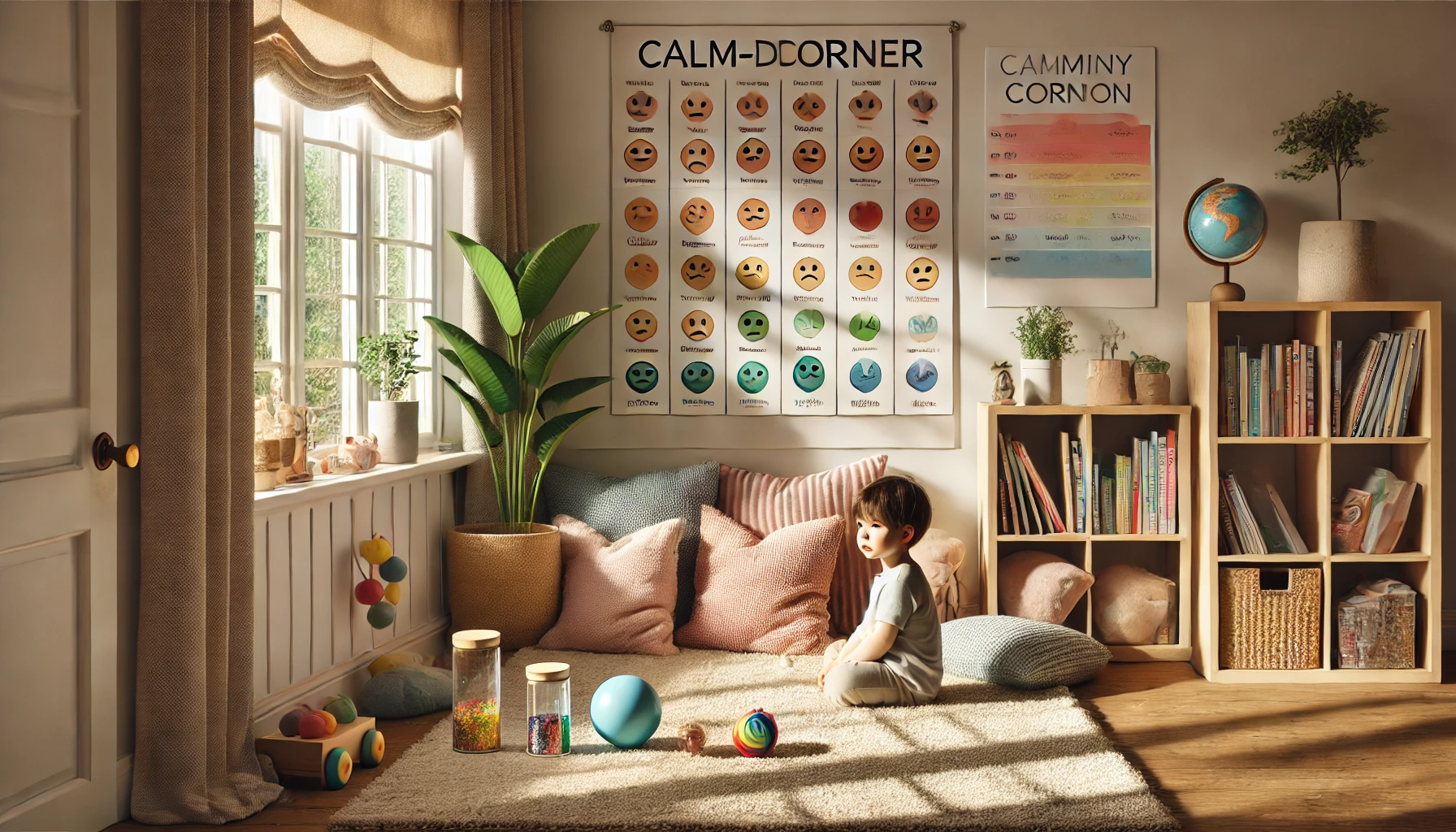Young children experience a wide range of emotions each day — excitement, frustration, joy, sadness, anger, fear — often without fully understanding what they’re feeling or how to handle it. That’s where a calm-down corner comes in.
Creating a calm-down corner at home provides a safe and comforting space for children to self-regulate, reflect, and recover from overwhelming emotions. It’s not a punishment zone or a time-out corner — it’s a tool for emotional growth.
In this article, you’ll learn why calm-down corners are effective, what to include, how to introduce the concept to your child, and how to adapt it based on their needs and personality.
What Is a Calm-Down Corner?
A calm-down corner is a dedicated space in the home where a child can go to relax, breathe, and regain emotional control when they feel upset, angry, scared, or overwhelmed. It’s not used for discipline — it’s a positive environment for emotional learning.
Think of it as a cozy emotional reset station.
This kind of space teaches children that big feelings are okay and that they have tools and strategies to manage them safely and independently.
Why Is It Important for Children?
Young children are still developing emotional regulation skills. They often express feelings through crying, shouting, or tantrums simply because they don’t yet know how to cope.
A calm-down corner helps with:
- Teaching self-awareness and emotional literacy
- Reducing outbursts and tantrums
- Building healthy coping mechanisms
- Encouraging independence in emotional regulation
- Creating a predictable, safe routine during stressful moments
It also reassures children that it’s okay to feel upset — what matters is how we handle those feelings.
Where Should You Set Up a Calm-Down Corner?
The calm-down corner doesn’t need to be a separate room. A small corner in the bedroom, living room, or play area works perfectly. The key is that it feels safe, quiet, and inviting.
Tips for choosing a spot:
- Choose a low-traffic area with few distractions
- Avoid placing it near screens or busy doorways
- Make sure it’s accessible and consistent (don’t keep moving it)
- Ensure your child can reach and use the tools independently
Even a simple floor mat with a pillow and a basket of calming tools can be enough.
What to Include in a Calm-Down Corner
The best calm-down corners are tailored to your child’s preferences and needs. Here are some common elements to consider:
1. Comfort Items
- Pillows, bean bags, or soft blankets
- Stuffed animals or a favorite toy
- A soft rug or mat
2. Calming Tools
- Sensory bottles (glitter jars, slow-moving liquids)
- Fidget toys (squishy balls, putty, textured items)
- Breathing cards or pinwheels
3. Books and Visuals
- Books about emotions (e.g., The Color Monster, When Sophie Gets Angry)
- Emotion charts or “How I Feel Today” posters
- A mirror (to help recognize facial expressions)
4. Soothing Activities
- Coloring books and crayons
- Puzzle pieces
- Calm music (if appropriate and not overstimulating)
- A journal for older children to draw or write
The goal is to empower the child to choose what helps them feel calm.
How to Introduce the Calm-Down Corner to Your Child
Introducing this concept early, and in a positive way, is key to success. Here’s how to do it:
- Talk about emotions regularly: “Sometimes we feel mad, and that’s okay.”
- Let them help design the space so they feel ownership
- Role-play how to use the corner: “When I feel frustrated, I can go here and squeeze this ball.”
- Reinforce that the calm-down corner is not a punishment
- Model using it yourself: “I’m feeling stressed. I’m going to take a few breaths in the calm-down space.”
This teaches your child that everyone needs breaks sometimes — even grown-ups.
When Should Children Use It?
A child can use the calm-down corner:
- During or after emotional outbursts
- When they say they feel sad, scared, or angry
- Before things escalate (if you see the early signs)
- After overstimulation (e.g., after a party or loud activity)
- Simply to relax and have alone time
The more consistently it’s used, the more naturally it becomes part of their coping routine.
How Long Should They Stay There?
There’s no set time limit. The calm-down corner isn’t a “time-out.” Instead, it’s a child-led experience.
Encourage your child to stay until they feel calm. For some, that might be five minutes. For others, it could be twenty. Over time, they’ll learn how long they need and what helps most.
Common Mistakes to Avoid
- Don’t use the calm-down corner as a threat or punishment
- Don’t force your child to stay if they resist — gently guide, but don’t trap
- Don’t overload the space with too many options or toys
- Don’t expect immediate results — emotional regulation is a long-term skill
This is about teaching, not controlling.
Adapting the Calm-Down Corner Over Time
As your child grows, their needs and preferences may change. Review the space every few months and ask:
- Are they using it?
- What do they like most?
- What could be added or removed?
- Does it feel age-appropriate and comfortable?
Involving your child in these updates keeps the space relevant and engaging.
Final Thoughts: Helping Children Build Inner Peace
Creating a calm-down corner is one of the most powerful ways to support a young child’s emotional development. It shows that big feelings are not scary or wrong — they’re part of being human.
Through this simple, consistent practice, children learn how to take responsibility for their emotions in a gentle, age-appropriate way. And that’s a skill that will serve them not just at home, but for a lifetime.
By offering a safe space to pause, breathe, and reset, you’re not only preventing meltdowns — you’re planting the seeds for emotional resilience, empathy, and confidence.
